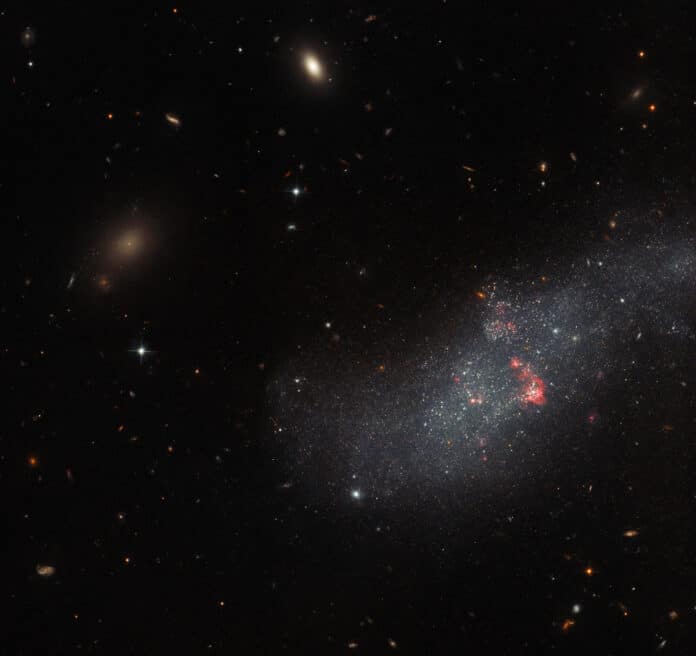NASA/ESA Hubble Space Telescope recently shared an image of a diminutive dwarf galaxy- UGCA 307 that resemble nothing more than a hazy patch of passing cloud. In this image, the galaxy hangs against an irregular backdrop of distant galaxies.
The small galaxy, located approximately 26 million light-years from Earth in the constellation Corvus, is made up of a diffuse band of stars with red gas bubbles that identify regions of recent star formation. It appears as just a tiny patch of stars.
This picture is part of a Hubble mission to investigate all of the known nearby galaxies, providing astronomers with information about our galaxy’s surroundings. Before these studies, Hubble has examined about 75 percent of neighboring galaxies in sufficient detail to identify the brightest stars and develop a knowledge of the stars that make up each galaxy. By utilizing brief gaps in Hubble‘s viewing schedule, this mission sought to investigate the remaining 25% of neighboring galaxies.
This crystal-clear image was captured by Hubble’s Advanced Camera for Surveys (ACS), installed on the telescope in 2002 during Servicing Mission 3B. The ACS replaced one of Hubble’s original instruments, the Faint Object Camera, which was built by ESA.
